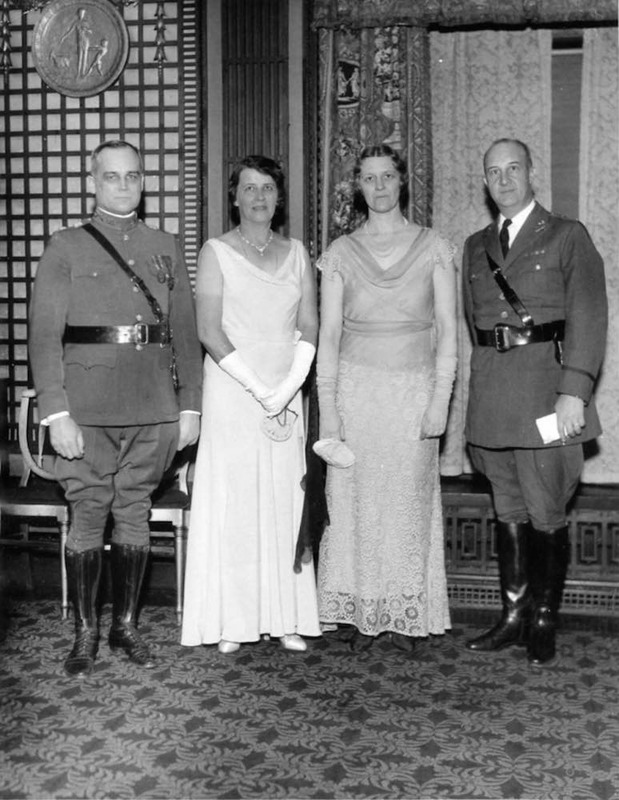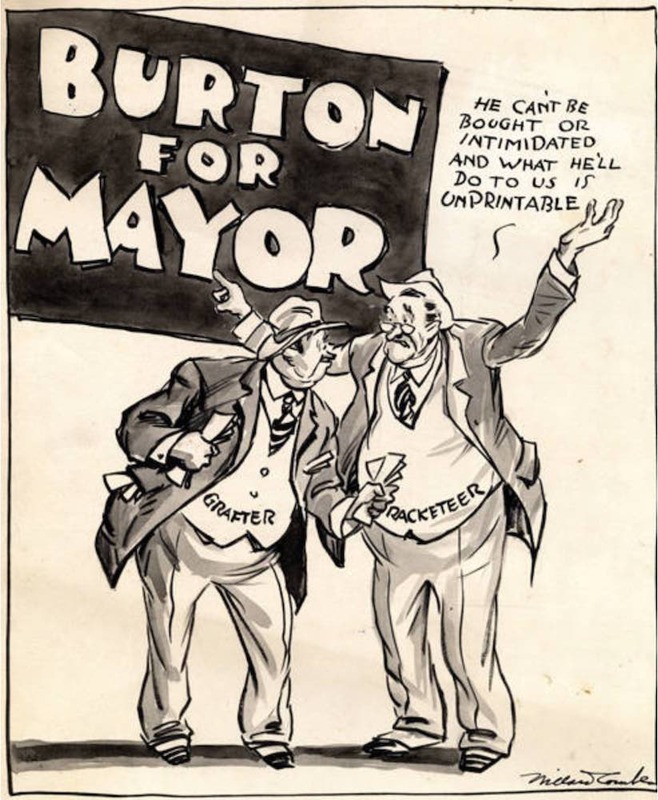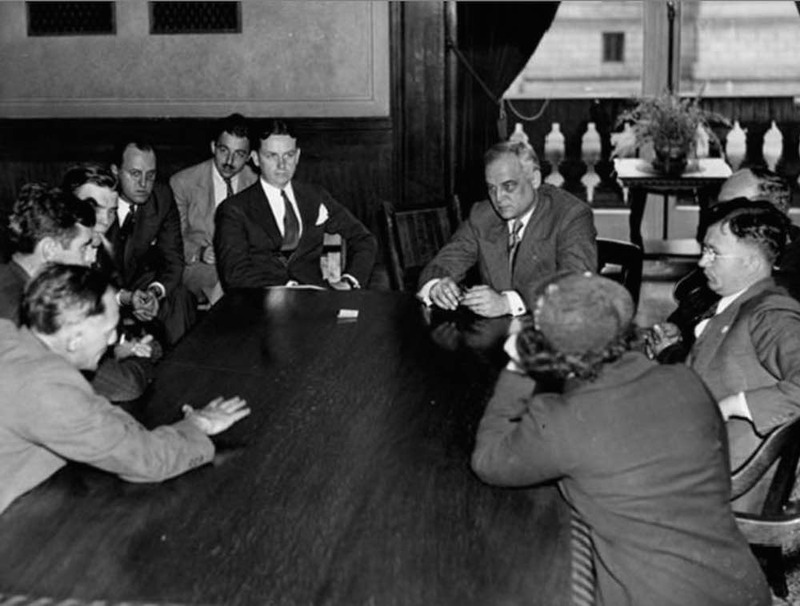Harold H. Burton Memorial Bridge

Republican Justice Harold Hitz Burton served as Cleveland's 45th mayor from 1936 to 1940, U.S. Senator from Ohio from 1941 to 1945, and U.S. Supreme Court Associate Justice from 1945 until his retirement in 1958 due to failing health. Burton was born in Jamaica Plain, Massachusetts, in 1888, and graduated from Bowdoin College and Harvard Law School. Law was Harold Burton's calling, and in his various practices he sought to uphold it as dispassionately as possible. Upon the United States' entry into World War I, he sought commission as an officer in the 361st Infantry of the 91st Division and achieved the rank of Captain by fall 1918. In his service he fought in Verdun during the Meuse-Argonne Offensive, was awarded the Belgian Croix de Guerre "for extraordinary heroism and gallantry in action," and was recognized by General John J. Pershing "for exceptionally meritorious and conspicuous services during the Argonne Offensive."
Following the resigning of his commission in 1919, Burton moved to Cleveland with his wife to practice corporate law in a local firm before forming his own firms: Cull, Burton & Laughlin and Andrews, Hadden & Burton. After a brief stint as Cuyahoga County Commander of the American Legion he was persuaded to join the world of politics by local Republican Party leader Maurice Maschke. In 1921, Cleveland constituents voted to create the position of City Manager, an individual to work closely with the city government to oversee city development and governance with the goal of eliminating party politics in the interest of the city's progress. Burton initially served under City Manager William R. Hopkins as City Law Director from 1930 to 1931, though some of his time in office was as interim City Director following the removal of Hopkins by the city council. The position of City Manager was eliminated in November 1931, thereby restoring the mayoralty. Burton later ran for the recreated position of Mayor in 1935 as an independent Republican seeking to oust the corrupt Harry L. Davis. By 1936 Cleveland had become rife with corruption in the form of gambling, racketeering, and protection rackets. Burton's desire to eliminate corruption led him to hire Eliot Ness as City Safety Director, tasking Ness with cleaning up the city.
As a mayor during the Great Depression, Burton benefited from a number of New Deal programs designed to put people back to work and rebuild the aging infrastructure of the city. One of the most successful and influential of these was the Works Progress Administration (WPA), a federal program that provided economic aid to workers and cities through construction projects and infrastructure renovations that often could not be afforded by the cities themselves. Cleveland's Memorial Shoreway, now a segment of Ohio State Route 2, was originally constructed to provide transit to the Great Lakes Exposition of 1936. This roadway was expanded using WPA funding to provide access to downtown Cleveland from the West Side as one of the nation's first limited-access expressways, with the majority of it completed in 1939. Mayor Burton worked closely with the WPA and its administrators to increase the funding given to Cleveland for its development. Under Burton and with federal assistance, Cleveland's unemployment declined from 125,000 persons to 75,000 using the almost $1.5 million that the WPA provided in relief funding to the city government each month. Following Burton's death, the Main Avenue Bridge, a segment of Memorial Shoreway, was later renamed the Harold H. Burton Memorial Bridge in his memory.
Harold Burton served as Mayor of Cleveland for only four years before pursuing election to the U.S. Senate, and he was ultimately appointed into the Supreme Court by Harry S. Truman in 1945. As an Associate Justice he later voted in favor of and helped produce unanimity in the landmark Brown v. Board of Education case, which can be considered the highlight of his career on the court.
Harold Burton served as a model soldier, Republican Mayor, and Associate Justice throughout his life, seeking only to do what he considered to be righteous and just. It is because of this that he left a very noncontroversial legacy, and as such has been somewhat ignored by history which remembers great and controversial figures alike.
Images






